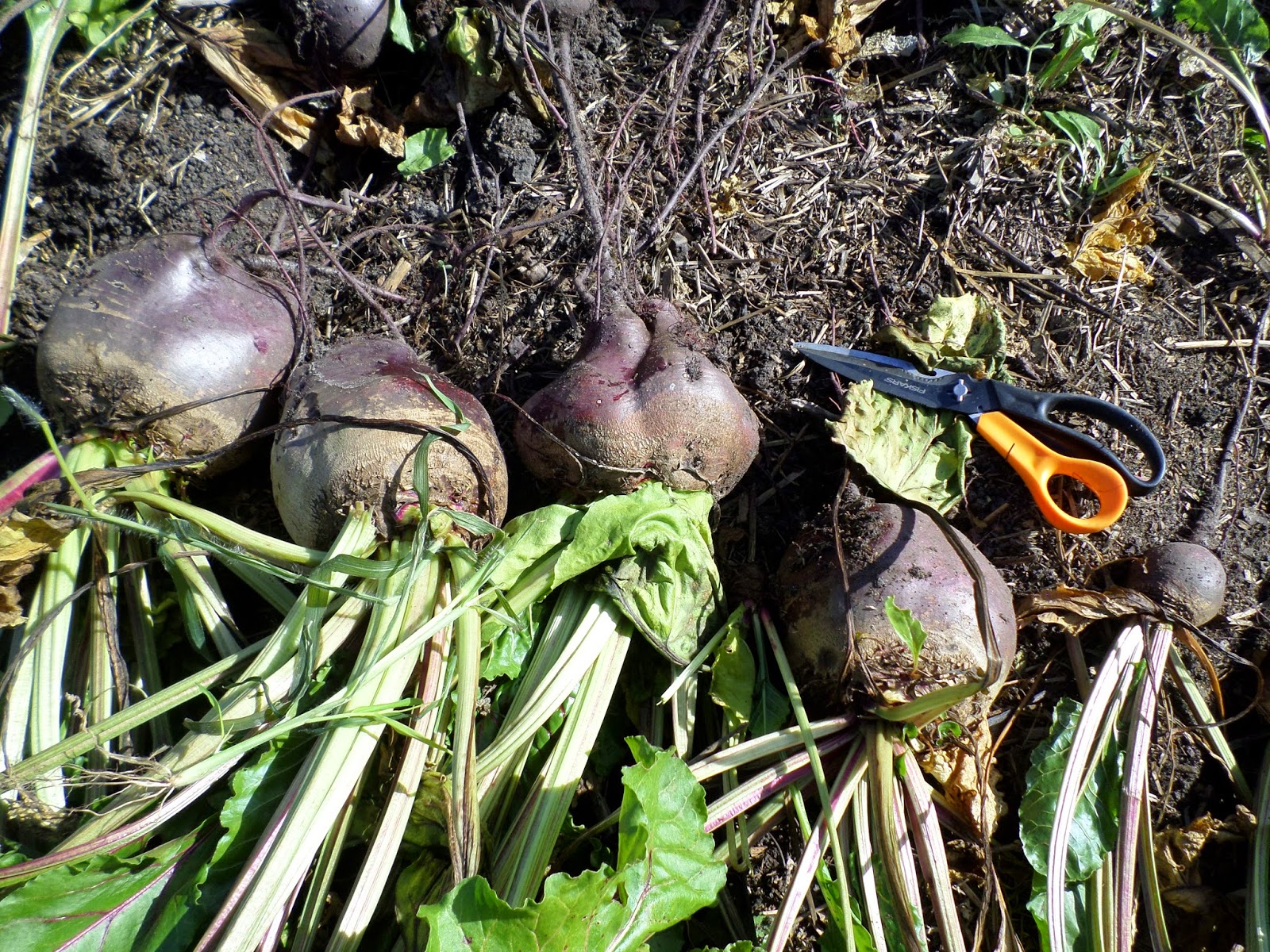I was reading Root Cellaring, by Mike and Nancy Bubel and found a reference to Long Season Beets. They were described as very large, yet tender, beets that winter well in a root cellar. Generally when root crops get overly large the inside is woody and inedible. The long season beet variety is an exception as it is designed to grow very large while staying tender thorough out.
 |
| Even the leaves of these beets are over sized. |
Click Read More to see the complete post.
Long Season beets are planted in early spring when the danger of frost has passed and harvested in early fall prior to a hard freeze. The growing season is 80 days.
Beet seeds are unusual as each seed is actually a cluster containing three seeds. If they all sprout you will need to thin the beets so there is only one plant every 10 inches or so in the row. This will allow room for these extra large beets to grow to their full potential.
Keep the beets weeded through out the summer and water if you do not get regular rainfall.
Just prior to a hard freeze, pull the beets and allow them to dry for a few hours.
 |
| All these beets were grown in a 4' x 4' garden bed. |
Remove the stem about 1 inch above the base of the beet. Put the beets in a container and cover with sand for winter storage. Place in a root cellar. If you don't have a root cellar, consider using a structure that is around 40 degrees and humid.
Beets, like most colorful vegetables, are a great source of phytonutrients and are also a good source of minerals such as folate, manganese, and potassium. Like many deep colored vegetables (especially those blue, purple and orange) they contribute to eye health.
According to Jo Robinson, Eating on the Wild Side, "beets have more antioxidant properties than all other common vegetables in the grocery store except for artichokes, red cabbage, kale and bell peppers. They have nine times more antioxidant activity than the typical tomato and fifty times more than orange carrots. A dietary survey revealed that people, who eat beets on a regular basis have a lower risk of cancer, cardiovascular disease, diabetes, obesity, and diseases of the digestive tract than people who don't eat beets."
 |
| The scissors in the picture provides scale so you can see the size of the beets. They also work well for cutting off the leaves. |
 |
| Trimmed beets. |
 |
| Beets packed in metal container for root cellar storage. |
 |
| Sand is placed on top of the beets to prevent sprouting and moisture loss. |
One long season beet can easily make a side dish for a family of four. Roasted Beets with Apples and Onions and Chocolate Maple Beet Pie are a few ways to enjoy Long Season beets.

No comments:
Post a Comment
Your comments and questions are welcome!